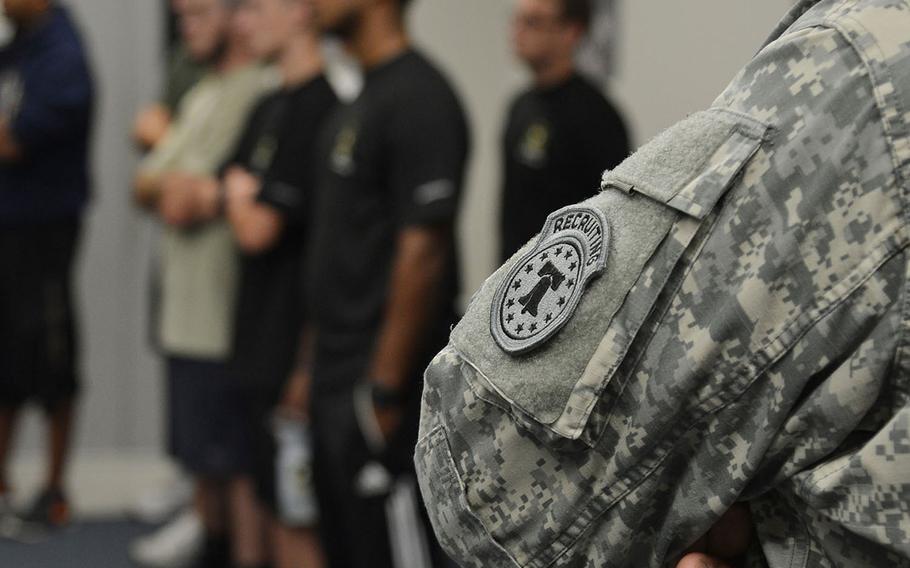
Army recruits visit MacDill Air Force Base during a recruiting event held Oct. 17, 2014. The service is taking a different approach to updating its recruiting and marketing tactics. (U.S. Army)
WASHINGTON — Recruiters armed with new marketing campaigns and technology will target cities where the Army has struggled to engage potential soldiers as part of a revamped strategy to fill the ranks.
The service is taking a holistic approach to updating its recruiting and marketing enterprises, which have gone years without proper review, Army Gen. Stephen Townsend, chief of Training and Doctrine Command, said Tuesday. The lack of assessment has left current recruiters poorly outfitted to engage their targets — about 30 percent of men and women ages 17 to 24 who qualify to join the military.
The bottom line: The vast majority of those who could serve in the Army simply do not understand the basics about the service, said Townsend, speaking with reporters at the Association of the United States Army’s annual conference in Washington.
“It really gets down to ignorance about what our armed forces are, what they do for the country and what your opportunities are,” said Townsend, who is leading the Army’s study of its recruiting practices. The review was launched this summer, before the service officially missed its 2018 recruiting goal by 6,500 soldiers. “When you give [potential recruits] a simple informational briefing — here’s what the armed forces are about, here are the career opportunities in the Army, here are the benefits of service — propensity [to enlist] jumps. So, it’s just getting the word out.”
Townsend’s study is already producing changes. The Army will add 650 recruiters to its force, bringing it to 10,250 by next summer. It has also identified 22 cities where it will use the new recruiters to boost its footprint and tailor its marketing to that area based on common interests.
“We need to do this targeted recruiting effort — put recruiters in the right part of the local population [and] arm them with a message that resonates with that population,” he said.
For example, in Boston, one of the cities the Army will target, high tech jobs are in demand. Recruiters there will focus on pitching Army jobs in technology fields, such as cyberoperations, Townsend said. They will also try to capitalize on Boston’s connection to military history, such as its role in launching the Revolutionary War.
“We think we can actually be successful in Boston,” he said. “There’s a tradition of service and we need to tap into that.”
In other areas, the Army will tailor its advertising to showing off other jobs, including front-line combat jobs, which have for years been largely filled by young people from the South and Midwest.
The service will also launch new commercials, which have not been updated in several years. But those commercials will not target broadcast television as they have been for decades, Townsend said.
“The youth are not watching broadcast TV,” he said. “They are live-streaming on Hulu or Netflix. They are on social media … on Twitch, they’re on Twitter, they’re on Instagram. We need to be in those spaces, and we’re going to go to those spaces.”
These changes come as the Army will increase its goal in 2019 after missing its target for the first time since 2005. The service aims to bring in 73,000 new soldiers in fiscal year 2019.
The recruiting shortfall was a problem many in the Army’s senior ranks did not anticipate. But it comes as the Army looks to grow for the first time in nearly a decade after budget cuts and downsizing force strength in Iraq and Afghanistan.
The Army found similar issues in the mid-1990s after the first Gulf War, Townsend said. In 1998, the service fell 16,000 recruits short of its goal. In 1999, the Army exceeded its goal and added an additional several thousand new soldiers, making up for its failure the year before, Townsend said.
The general is confident they can do the same in 2019.
“I think it’s going to be a challenge,” he said. “But if we take the steps, I think we will be successful.”
dickstein.corey@stripes.com Twitter: @CDicksteinDC